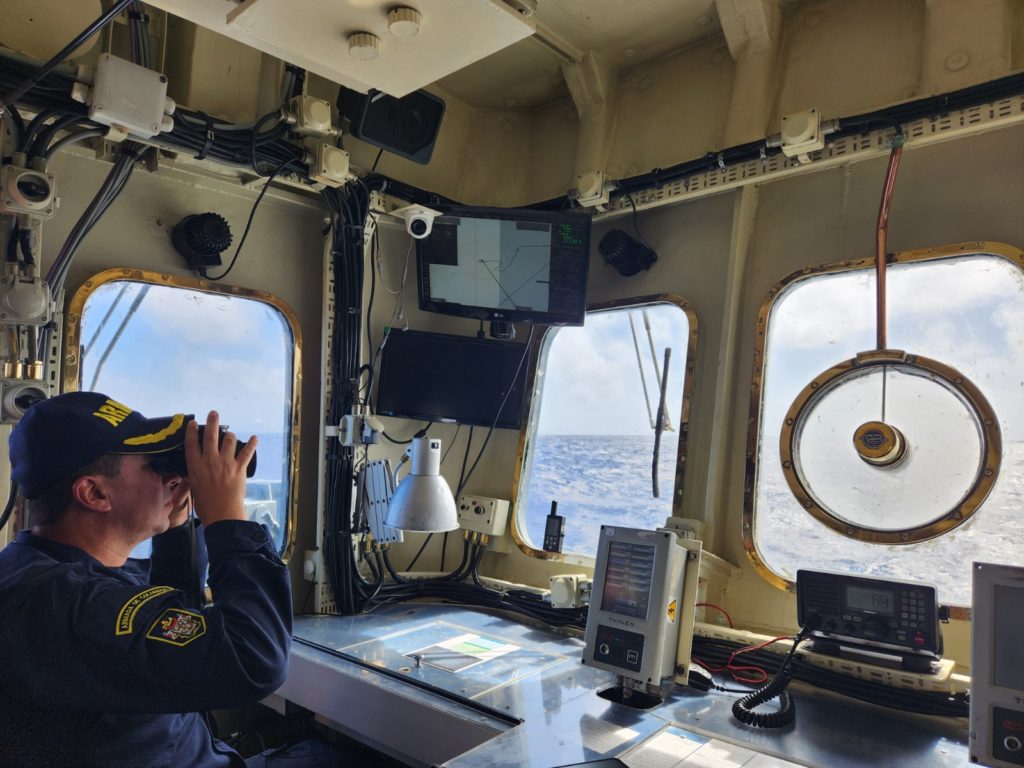
Colombia and Ecuador have seized two cocaine-laden submarines in Pacific Ocean waters. The two semi-submersibles were loaded with drugs when they were intercepted by the authorities of both countries over the weekend. In the case of the Colombian Navy’s interception, it was reported that the operation took place yesterday, Sunday, and that the seized narco-submarine was about fifteen meters long and gray in color. It was detained near the port of Buenaventura, on Colombia’s Pacific coast, and was carrying 795 kilos of cocaine. The three people on board were arrested.
Last Saturday, the Ecuadorian Armed Forces announced the seizure of another semi-submersible, which was also traveling in the Pacific Ocean, with more than three tons of cocaine. The narco submarine, like the one seized in Colombia, is gray in color and measures 15 meters long. The operation took place some 60 kilometers off the coast of Esmeraldas, in northwestern Ecuador. Three Colombian nationals were arrested on board the vessel, which was carrying drugs worth US$50 million.
International collaboration against drug trafficking
This weekend’s major anti-drug operations were made possible by police and military collaboration between the two countries. The fight against drug trafficking, which fuels the illegal armed groups that sow terror in the regions, is being reinforced, despite the discrepancies between the presidents’ different approaches to this battle.
A United Nations report indicates that 2022 was a record year for drug crops in Colombia. Coca leaf cultivation in the country, the raw material for cocaine production, increased by 13% to 230,000 hectares planted. Although Ecuador does not produce cocaine, it is one of the main drug trafficking corridors in the continent and functions as a stockpiling and transit point for this drug coming from Colombia. This is so because the country adopted the dollar as legal tender two decades ago, a fact that facilitates illegal trade since, as it is commonly used and legalized in Ecuador, it speeds up money transfers and makes it less complicated to launder large sums of money.
The coordination of the Colombian Navy was essential in this weekend’s operation. According to the head of anti-drug investigations of the Ecuadorian police, Lieutenant Juan Carlos Gines, the artisanal vessel intercepted by his country on Saturday was seized “while circulating in a maritime exclusive economic zone”. Gines also explained that those apprehended, “identified as Arlin G., Jose C. and Victor O., along with the seized cargo, were handed over to the police”.
Increasingly powerful illegal armed groups
In reality, the substantial cocaine trade is feeding the illegal armed groups that proliferate on both sides of the border between the two countries. The bottom line is that criminal gangs are becoming increasingly powerful, thanks to the multi-million dollar profits from drug trafficking.
Ecuador closed 2023 with an unprecedented rate of 46 homicides per 100,000 inhabitants and began 2024 with the declaration of internal armed conflict by the government of Daniel Noboa against the criminal gangs that form part of the international drug trafficking chain.
In Colombia, the Total Peace dialogue initiative, for now, is not advancing as fast as the Colombian government would like, while it is being strongly questioned by the opposition, which accuses the State of facilitating the strengthening of criminal groups.
This is the first seizure of this type in 2024. In November of last year, a similar vessel with a five-ton shipment of drugs was seized in a maritime zone of Galapagos, and in 2022 another with two tons in the same place.
Narco-submarines, not a new phenomenon
The use of submersibles to transport narcotics from their production region to their consumption areas in the United States and Europe is nothing new. These vessels began to be used in the late 1990s. Some are capable of crossing the Atlantic Ocean, replacing high-speed vessels as states improved their detection systems.
They are usually of domestic construction, although others are remarkably sophisticated. Between 1993 and 2008, 26 narco-submarines were seized in Colombia, both under construction and at sea; during 2007, the Colombian armed forces seized a total of thirteen narco-submarines, and during 2008, eight were seized. The U.S. Coast Guard is currently programming and adjusting its hydrophones (marine microphone) to detect the particular sounds of this type of vessel from a long distance.
In 2006, the United States intercepted its first drug submersible 145 kilometers west of Costa Rica. By 2008, it reported detecting ten per month. Colombia’s west coast has numerous rivers running through the jungle and into the Pacific Ocean, facilitating the construction of clandestine shipyards. These are difficult to discover, but offer easy access to the sea. The value of the drug trafficking submersibles seized so far amounts to US$1 million.
See all the latest news from Colombia and the world at ColombiaOne.com. Contact our newsroom to report an update or send your story, photos and videos. Follow Colombia One on Google News, Facebook, Instagram, and subscribe here to our newsletter.

